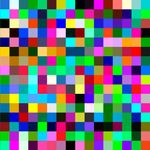 Adobe Community
Adobe Community
- Home
- Photoshop ecosystem
- Discussions
- Re: How all-purpose a color profile is US Web Coat...
- Re: How all-purpose a color profile is US Web Coat...
Copy link to clipboard
Copied
Preparing CMYK PDF files for print (more specifically, for rollup banners) and while I've never had any problems leaving the default settings be -- in this case, a working space of US Web Coated (SWOP) v2 for CMYK projects -- I was wondering if I would benefit greatly switching to a more modern working space / color profile. If there's no tangible reason to, I'll just leave things be. Things have looked fine on the output so far.
 1 Correct answer
1 Correct answer
There is only one answer to this question: you must ask them which CMYK profile they want you to use. Don't ask the customer relations people, they often don't know. Get an answer from the people who will actually do the printing.
A CMYK profile is a characterization of a press calibrated to a certain standard, using standardized inks on a certain medium. It's a description of the entire print process rolled up into one icc profile.
These standards vary around the world. SWOP is only a valid
...Explore related tutorials & articles
Copy link to clipboard
Copied
Hi color profile which Photoshop select automatically when you choose CMYK color mode works great unless you have some specific need....Regards
Copy link to clipboard
Copied
I'm not sure what that is, mine has been at US Web Coated (SWOP) v2 for CMYK from the start. And like I said, it has served me well so far. Should I leave well enough alone, or should I be sounding alarm and scrambling for a better one, even mid-project? (How big a deal is it that I'm using this profile for printing banners?)
Copy link to clipboard
Copied
Why would you use CMYK profile for a Web press for a document that's to be printed on an inkjet printer (posssibly one that has CMYK Plus inks)?
Copy link to clipboard
Copied
Greetings from the future! BASICALLY, I think that is the original poster's question... and also what I'm searching about. Large-Format inkjet printer profiles just don't seem to be out there...available. The working profiles, sure... but not SPECIFIC "PRINTER" profiles. Not that we can SEE and CHOOSE from a list. What I'm trying to figure out... after YEARS of just printing with the default, embedded SWOP profile, is, does our RIP software use it's own, UNKNOWABLE to the user, printer profile if we DE-select "Use Embedded Printer Profile". *shrugs*
Copy link to clipboard
Copied
Greetings from the future! BASICALLY, I think that is the original poster's question... and also what I'm searching about. Large-Format inkjet printer profiles just don't seem to be out there...available. The working profiles, sure... but not SPECIFIC "PRINTER" profiles. Not that we can SEE and CHOOSE from a list. What I'm trying to figure out... after YEARS of just printing with the default, embedded SWOP profile, is, does our RIP software use it's own, UNKNOWABLE to the user, printer profile if we DE-select "Use Embedded Printer Profile". *shrugs*
By @crgrove
A device profile for an inkjet is either based around the printer driver or RIP settings used for that particular combination of substrate, inkset, resolution, number of passes etc.
Beyond the actual device/printer profile which describes the "full gamut" of the output condition, there may also be a profile that is the "target" which simulates another more common printing condition, such as an offset press condition. This could be a standard ICC profile, or perhaps an ICC DeviceLink profile directly connecting the target/simulation to the device/output profile.
Some large format RIP's may not even use a standard ICC profile "under the hood" as the device/printer description and may use their own proprietary colour lookup table (often the case in proofing RIPs).
Copy link to clipboard
Copied
It would really depend on the output/destination that your service provider has their equipment set up for. Obviously, the roll-up banner is most likely being produced on a wide-format inkjet printer, which could be aqueous, latex or solvent ink-based and is obviously not a lithographic web press. It depends on how the RIP/DFE is set up to honour incoming RGB/CMYK ICC colour profiles or to make an overriding assumption of what ICC profile is used to define incoming RGB/CMYK data.
So, if your service provider is asking for CMYK PDF files, they really should be telling you what kind of CMYK.
Copy link to clipboard
Copied
There is only one answer to this question: you must ask them which CMYK profile they want you to use. Don't ask the customer relations people, they often don't know. Get an answer from the people who will actually do the printing.
A CMYK profile is a characterization of a press calibrated to a certain standard, using standardized inks on a certain medium. It's a description of the entire print process rolled up into one icc profile.
These standards vary around the world. SWOP is only a valid standard in North and South America. It doesn't apply anywhere else in the world. But in the US, the likelihood of US Web Coated (SWOP) being appropriate is high enough that they made it the Photoshop default.
In Europe, you'll most likely be asked for ISO Coated (ECI) 300%, or Coated FOGRA39 (which has 330% ink limit).
Copy link to clipboard
Copied
I will make sure to ask, thanks.
But until I get that answer, or in the absence of one, is it generally safe to use the Photoshop default U.S Web Coated (SWOP) v2 for all-purpose print jobs in North America?
One would imagine that just the fact that it's the default CMYK profile in Photoshop, printers would be universally accommodating to it. But I also wonder if different language/region versions of Photoshop have different defaults for color profiles.
Copy link to clipboard
Copied
The final answer depends on what level of color precision and quality control you are expected to meet, according to your contract.
If you always use US Web Coated SWOP v2, chances are it will print “mostly OK” in a lot of US shops, but “mostly OK” also means it’s always “partially not OK.” You will always be kind of right and kind of wrong. If you would like your color to be “completely OK” as often as possible, then always ask if there is a profile that represents the output conditions and proofing standard established for the current job at the current print shop.
As with any profile, the thing about US Web Coated SWOP v2 is that how it treats color is based on a long list of assumptions about how the press is set up. Presses are set up for the job requirements such as the specific paper and inks chosen for the job, not to accommodate Photoshop, so it isn’t realistic to expect printers to always adjust presses for a Photoshop default.
Here’s an article that has some information, including some history and the assumptions that go into US Web Coated SWOP v2:
Bit by Bit: Why Your Photoshop Color Separations Are Wrong — and How to Fix Them
For example, he points out that US Web Coated means it’s for a coated paper on a web offset press. But if your job is on uncoated paper, or on a sheetfed press, then it is not appropriate to choose a Web Coated profile. At the end he says:
“I prefer to use a custom profile for a particular press and paper combination if one is available…And, for the one percent of you who are preparing art for heat-set web-offset printing: use SWOP — that’s what it’s for.“
Given all that, it should be clear that US Web Coated SWOP v2 is certainly not “all purpose.” Instead, US Web Coated SWOP v2 is simply there as a generic fallback position (sort of an “I give up, even if it looks bad” option) if you are unable to get what you should have: A profile matched to the output conditions of the specific job.
And yes, different regions do have different defaults. You can see them yourself in Photoshop if you choose a non-US preset in the Settings menu in the Color Settings dialog box. Choosing a Europe preset sets the default CMYK profile to FOGRA39, and choosing a Japan preset sets the default to one of the Japan Color profiles.
Copy link to clipboard
Copied
• Color.org has an ICC Profile Registry which gives all necessary specs, such as; the paper that's being used, total ink amounts for that paper, etc.
• There is also information on IDEAlliance website for non-members.
• For InkJet and/or wide format printers, there is a PrintWide2020-Idealliance.icc profile for a larger gamut profile.
• Ghent Workgroup or GWG.org/application-settings (all for the Adobe Creative Suite/Creative Cloud apps.)
I post this because I'm a prepress operator and a G7 Color Expert. Most file submissions to printing companies do not use the correct Destination Profile, they use the default settings in whatever application used. US WebCoated SWOPV2 is for web printing and the maximum ink limit due to web paper is 300% in contrast to an actual offset printing ICC profile like GRACoLCoated2013.icc or CRPC-6 for Coated papers (max ink limit 320%) and GRACoLUncoated2013.icc or CRPC-3 for Uncoated papers (max ink limit 280%).
Copy link to clipboard
Copied
I agree with others that if it HAS to be CMYK, then you really do need to find out what CMYK profile the print process wants.
US Web Coated (SWOP) v2 is not a large colour space even when considering modern offset printing. For inkjet printing converting your original files to a generic ICC like US Web Coated (SWOP) v2 is really an unnecessary step, potentially compressing colour - when sending into a process that may easily have higher gamut capabilities.
I hope this helps
neil barstow, colourmanagement net :: adobe forum volunteer:: co-author: 'getting colour right'
google me "neil barstow colourmanagement" for lots of free articles on colour management



